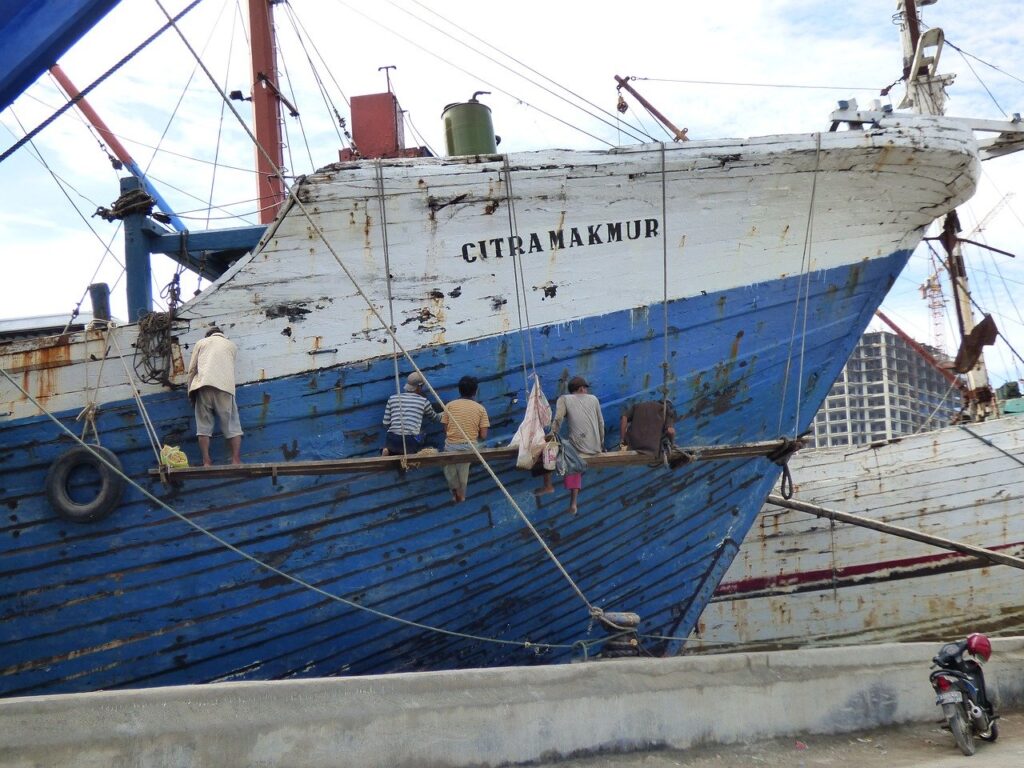(NEW YORK) — Where anonymity and covert reporting can often be fraught with incredibility, sensationalism, and in some cases, danger to the reporter or sources of a story, in some extraordinary reporting journeys, a dash of mystery is necessary to tell a complete story. That is the case with the Associated Press’ 2015 investigation, “Slaves may have caught the fish you bought.” Reported by journalists Robin McDowell, Margie Mason, and Martha Mendoza, the initial and remarkably succinct 3,659-word story follows as the three track the global seafood supply chain, all the way back to the South Pacific where there was said to be thousands of Burmese men enslaved by illegitimate fishing operations based in Thailand, centralized in a no-man’s land of Indonesian waters, in the remote village of Benjina on the Aru Islands of the Arafura Sea.
From the hands of slaves to dinner tables across the US, it was impossible to trace just how much seafood in any given dish or ingredient had come from illegitimate workers. Through confirmed reports by Thai suppliers of their US-based clients, the reporters were able to ascertain that this “tainted” seafood, including squid, snapper, grouper, tuna, mackerel, and other filler fish, was showing up in the most mainstream of settings: in major food distributors such as Sysco; supermarkets like Walmart and Kroger; popular pet food brands such as Iams and Meow Mix and even the sort of white cloth restaurants that claim to vet their ingredients. Indeed, the US was buying up about 20% of Thailand’s seafood exports, to the tune of $7 billion annually.
Their research began in late 2013, according to a follow-up report on the AP blog, published little more than a year later. They had heard, anecdotally, of destitute Burmese men being captured and coerced by Thai slave agents into working on shipping boats, some reportedly taken in youth and forced to work through adolescence and adulthood – as many as 20 years for some. Others, AP reporters would discover, were hardly fortunate enough to survive the nightmare.
The global seafood supply chain, they found, became more indeterminate the farther back they traced the line. According to that blog post, a “source pointed them to eastern Indonesia, where they discovered a slave island,” and that’s where their surreptitious operation began. This is one of the very few mentions of unnamed sources throughout the story.
While not exactly undercover – the reporters, four women, never posed as fishermen or engaged with Thai slave drivers under any false pretenses – they did monitor ports brimming with slave workers, sneak onto cargo ships to talk directly with the enslaved men, and for many nights followed several shipping trucks (they counted as many as 150 semis packed with illegal fish at one port), “through the seedy, mafia-run streets, headed toward the many drop-off sites Thailand. The countless points of interest went to create an enigmatic supply chain to help cover the illicit Thai boat captains’ tracks, which had no business in Indonesian waters to begin with.
A world away, with no internet, no security detail, and only a Burmese reporter, Esther Htusan, to aid in translation, followed the trail of illegal shipments throughout the hostile territory, all the while keeping just far enough behind to go unnoticed by armed guards and captains. In order to speak to the enslaved men, they snuck onto boats and bunks in the middle of the night, where they might even find them locked in cages.
The men, they found, were eager to talk – maybe too eager for their own good, reporters feared. They heard testimonies from more than 40 men, five of whom agreed to have their real names – not the fake names applied under their fake Thai passports – and some of their faces included in the stories. (Reporters later insisted that they had ensured the safety of the fishermen prior to publishing their names in AP.) Said one of the men:
“If Americans and Europeans are eating this fish, they should remember us,” said Hlaing Min, 30, a runaway slave from Benjina. “There must be a mountain of bones under the sea. … The bones of the people could be an island, it’s that many.”
What they heard from both named and unnamed men was horrifying: forced to drink dirty water, allowed only a few bites of curry per day, and beaten within an inch of their lives – often with toxic stingray tails – if they complained or attempted to rest during their 20- to 22-hour shift.
Perhaps most impressive about the story is how un-sensationalized the reporting really is. It’s sober — not at all overly graphic, descriptive or cinematic. Their sources and research speaks for itself. It’s not meant to entertain, only inform. In fact, only halfway through the story do they begin to reveal their furtive tactics to get those testimonies. Meanwhile, their choice to report mostly above-board, contacting major players in the supply chain directly, prompted international seafood firms to go silent, and the journalists were subsequently “followed” by men who purported to work for the firms. They wrote:
Their best bet, they decided, would be to link slave-caught fish to American dinner tables – and name names. At the start, sources told them it would be next to impossible. The industry was huge, and its practices murky. Fish was transferred between boats at sea. Documentation on land was often done improperly. And tainted and ‘clean’ seafood was mixed together at huge export markets.
Among the very few anonymous sources to contribute to the report, a former slave recruiting agent for the illegal Thai operation, insisted on withholding their role in the scheme “to avoid retribution.” Whether or not the reporters, or readers, care if this person is punished for talking is besides the point. Indeed, they may deserve what’s coming to them. But their information was vital to corroborating how the agent worked to convince young migrants, which had expanded to include Cambodians and impoverished Thais, too, to join the workforce – by lying about wages or even kidnapping, then selling them to boat captains. Children and the disabled were also targeted as they became increasingly desperate to add more workers to their ships, to help meet the demands of developed countries’ insatiable appetite for seafood.
Frustratingly, there was no shortage of sources, particularly seafood brokers, bosses, advocates, and lawmakers, who did go on record to claim they either had no idea this was happening, or that they were working hard to stop it — but not hard enough to completely sever ties with the robust Thai operation.
In the end, their incredibly dangerous and thorough efforts would help to successfully free some 2,000 men from these illegal ships, reuniting them with their families, who assumed their loved ones were missing or dead after years, and sometimes decades. And, after 18 months of work, a remarkably short period of time considering their accomplishment, McDowell, Mason, and Mendoza managed to do it while relying on very few anonymous sources or disguise – proof that vital and life-changing reporting can be done without compromising their ethics.


![Homeland Security officers an individual during an immigration enforcement operation. [Credit HSI Media Library]](https://theclick.news/wp-content/uploads/2025/05/hsi.jpg)